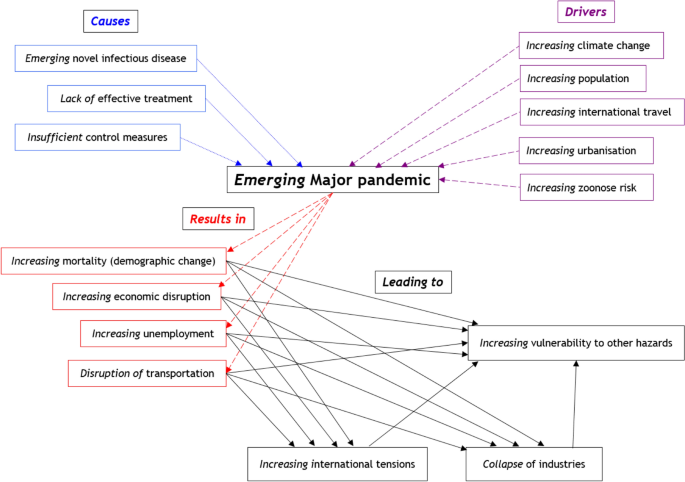

Unraveling the Complexities of Pandemic Risk Management
The emergence of a pandemic presents a multifaceted challenge that demands a strategic and comprehensive approach to risk management. As organizations grapple with the uncertainties brought about by global health crises, effective pandemic risk management becomes an indispensable tool in navigating the complexities of these unprecedented times.
Understanding the Dynamic Nature of Pandemic Risks
Pandemic risks are inherently dynamic, evolving with the progression of a health crisis. To effectively manage these risks, organizations must first understand the fluid nature of the threat. This involves continuous monitoring of global health data, staying abreast of emerging variants, and anticipating the potential impacts on various aspects of operations.
Proactive Preparedness: A Cornerstone of Risk Management
The old adage “prevention is better than cure” rings particularly true in the realm of pandemic risk management. Proactive preparedness involves establishing robust contingency plans, ensuring a resilient supply chain, and implementing measures to safeguard the health and well-being of employees. A well-prepared organization is better equipped to weather the challenges posed by a pandemic.
Data-Driven Decision-Making in Uncertain Times
In the face of a pandemic, data becomes a powerful ally in risk management. Analyzing epidemiological data, monitoring infection rates, and utilizing predictive modeling aid organizations in making informed decisions. Data-driven insights contribute to the development of effective strategies, ensuring a nimble and adaptive response to evolving circumstances.
Flexibility as a Key Component of Risk Mitigation
The ability to adapt and pivot swiftly is a hallmark of effective pandemic risk management. Organizations must embed flexibility into their operations, allowing for rapid adjustments to changing circumstances. This includes flexible work arrangements, adaptable supply chain strategies, and contingency plans that can be activated promptly in response to emerging risks.
Employee Well-Being as a Priority in Risk Mitigation
Managing pandemic risks extends beyond operational considerations to encompass the well-being of employees. Prioritizing mental health, providing support mechanisms, and fostering a culture of open communication contribute to a resilient workforce. A healthy and supported team is better equipped to navigate the challenges posed by a pandemic.
Supply Chain Resilience in the Face of Disruptions
Pandemics can disrupt supply chains on a global scale. Ensuring supply chain resilience involves diversifying suppliers, maintaining adequate inventory levels, and establishing alternative sourcing strategies. A resilient supply chain mitigates the impact of disruptions, ensuring continuity in operations even in the face of widespread challenges.
Scenario Planning for Contingency Preparedness
Effective pandemic risk management includes scenario planning to anticipate and prepare for a range of potential outcomes. This proactive approach allows organizations to identify vulnerabilities, assess the impact of various scenarios, and implement preemptive measures. Scenario planning enhances the organization’s ability to navigate uncertainties with agility and resilience.
Communication Strategies for Transparency and Assurance
Transparent communication is integral to pandemic risk management. Clear and timely communication fosters trust among employees, stakeholders, and the broader community. Providing regular updates, addressing concerns openly, and ensuring accessibility to accurate information contribute to a cohesive and informed response to the risks posed by a pandemic.
Continuous Evaluation and Learning for Future Preparedness
The culmination of effective pandemic risk management involves continuous evaluation and learning. After navigating a crisis, organizations must reflect on their responses, identify areas for improvement, and integrate lessons learned into future risk management strategies. This iterative process enhances an organization’s overall resilience and preparedness for future pandemics.
To delve deeper into the intricacies of pandemic risk management, visit Pandemic Risk Management. As organizations confront the challenges of global health crises, a proactive and adaptive approach to risk management becomes a cornerstone of resilience. By understanding the dynamic nature of pandemic risks and implementing comprehensive strategies, organizations can not only navigate current crises but also fortify themselves for the uncertainties of the future.







